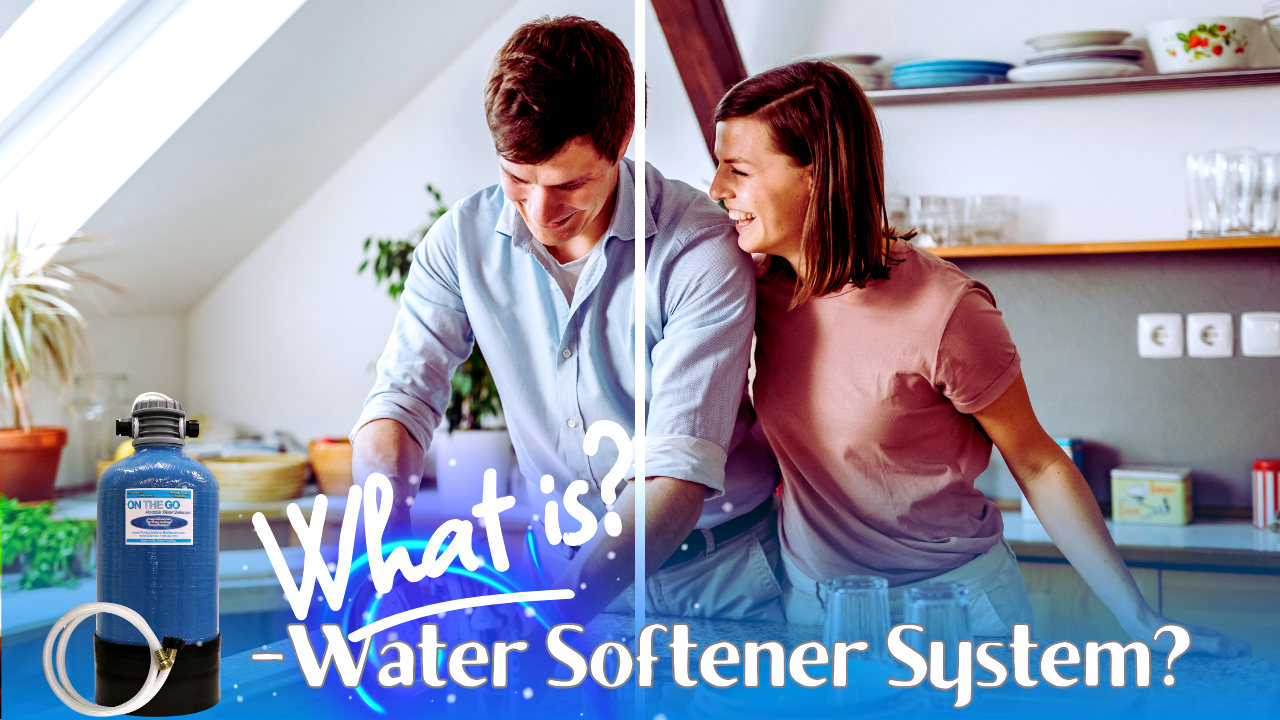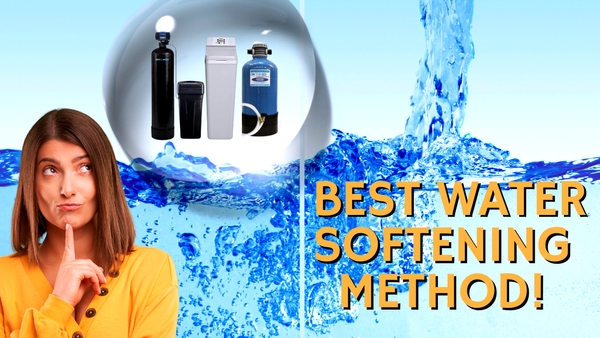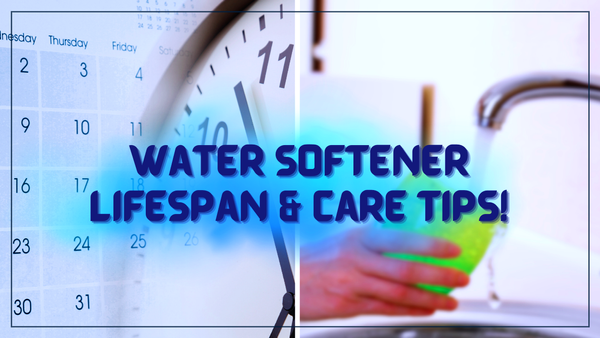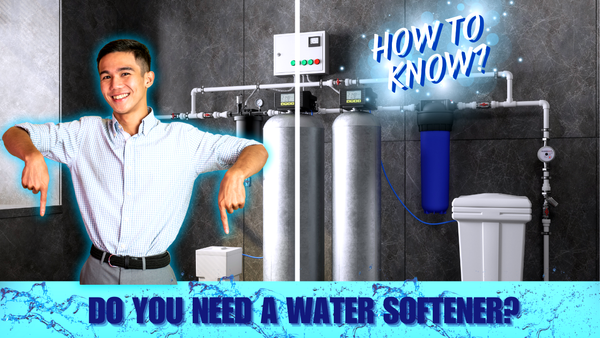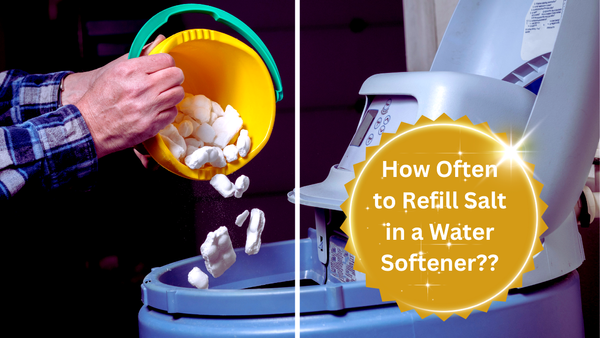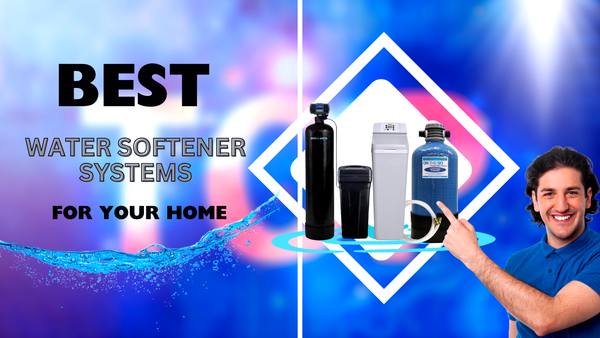Key Takeaways:
- Understanding Water Softener Systems: Learn what a water softener system is and how it works to improve water quality.
- Benefits of Softened Water: Discover the advantages of using softened water in your home.
- Types of Water Softeners: Explore different water softeners, including salt-based and salt-free options.
Water softener systems are a must for homes with hard water. Hard water has high levels of calcium and magnesium ions which can cause problems in your home. Calcium ions make hard water by reducing soap effectiveness and scaling in pipes. These systems remove these minerals and give you softened water for daily use.
Hard water can cause clogged pipes, stiff laundry, and dry skin. By installing a water softener system you can minimize these problems and enjoy soft water. This article will detail water softeners, their types, and their benefits.

How Does a Water Softener System Work?
A water softener system works on the principle of ion exchange. Ion exchange water softeners replace calcium and magnesium ions in the water with sodium ions, increasing sodium content in drinking water and potentially affecting health. This process involves replacing calcium and magnesium ions in the water with sodium ions. The system has resin beads that attract and hold onto the hardness ions and the softened water flows through.
The brine tank is a key part of this process. It holds a brine solution, water mixture, and sodium chloride. During the regeneration cycle, the brine solution flows through the resin beads, flushing out the hardness ions and recharging the beads with sodium ions.
The Importance of Softened Water
Soft water has many benefits for your home and health. It prevents scaling in plumbing fixtures and water-using appliances, extends their life, and improves efficiency. It also reduces soap scum, makes cleaning easier and more effective.
Using soft water can also improve your skin and hair condition. Hard water can dry out your skin and make your hair look dull. Soft water keeps moisture, making your skin and hair feel softer and smoother.
Types of Water Softeners
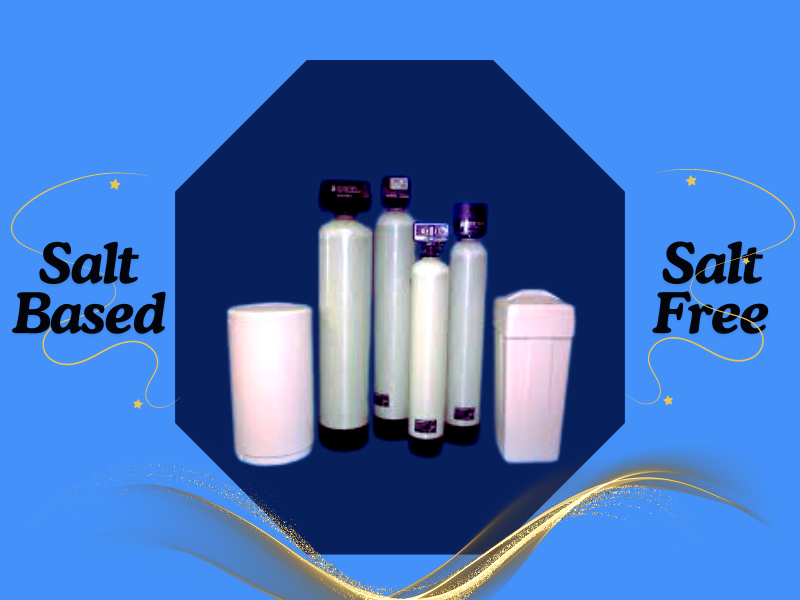
There are two types of water softeners: salt-based and salt-free. Salt-based water softeners use sodium ions to replace calcium and magnesium ions, softening the water. These are highly effective and widely used in homes with hard water.
Salt-free water softeners or water conditioners do not remove hard minerals. They use template-assisted crystallization to transform hard minerals into microcrystals and prevent scaling. These are easy to install and ideal for those who prefer salt-free solutions and want to minimize maintenance. While they prevent scaling, they don’t provide the same benefits as conventional water softeners.
Salt-Based Water Softeners
Salt-based water softeners are the most common type of water softening system. They use an ion exchange process to remove calcium and magnesium ions from the water. The system has a resin tank filled with resin beads and a brine tank that holds the salt solution.
During the ion exchange process, the hard water flows through the resin tank, where the beads attract and hold onto the hardness ions. The softened water then flows out of the system and is ready to use. Periodically the system goes through a regeneration cycle where the brine solution flushes out the accumulated hardness ions and recharges the resin beads with sodium ions.
Salt-Free Water Softeners
Salt-free water softeners or conditioners are an alternative to traditional salt-based systems. These do not remove hardness minerals but use a process called template-assisted crystallization (TAC) to alter the structure of the minerals, preventing them from forming scale on surfaces.
Salt-free water softeners are ideal for those who prefer low-maintenance solutions and don’t want to add salt to their water supply. They are also eco-friendly as they don’t produce wastewater and don’t require chemicals. However, it’s important to note that salt-free systems may not be as effective in very hard water conditions.
Benefits of Using a Water Softener System
Installing a water softener system in your home can have many benefits. One of the biggest advantages is preventing scaling in plumbing fixtures and water-using appliances. This will extend the life of your appliances and improve their efficiency.
Soft water also makes cleaning easier and more effective. It reduces soap scum and allows soap and detergents to lather better, resulting in cleaner dishes, clothes, and surfaces. Soft water can also improve your skin and hair condition, making them feel softer and smoother.
Common Issues Caused by Hard Water

Hard water can cause many problems in your home. One of the most common is scaling in plumbing fixtures and water-using appliances. Hard water minerals especially calcium and magnesium can build up inside hot water appliances including water heaters reducing efficiency and lifespan. This can lead to low water pressure, clogged pipes, and decreased efficiency of appliances like water heaters and washing machines.
Hard water can also leave soap scum on surfaces making cleaning more difficult. It can cause stiff laundry, dry skin, and dull hair. By installing a water softener system, you can minimize these problems and enjoy the benefits of soft water.
How to Choose the Right Water Softener System
Installing a water softener system usually requires professional help. A plumber can help you determine the best location for the system and make sure it’s installed correctly. The installation process involves connecting the water softener to your home’s water supply and setting up the brine tank.
Maintenance of water softeners involves adding salt to the brine tank and making sure the system is working correctly. Salt-based systems require regular regeneration cycles to flush out accumulated hardness ions and replenish the resin beads with sodium ions. Salt-free systems require less maintenance but may need occasional cleaning to prevent buildup.
Installation and Maintenance of Water Softeners
Installing a water softener system typically requires professional assistance. A plumber can help you determine the best location for the system and ensure it is installed correctly. The installation process involves connecting the water softener to your home's water supply and setting up the brine tank.
Maintenance of water softeners involves periodically adding salt to the brine tank and ensuring the system functions correctly. Salt-based systems require regular regeneration cycles to flush out accumulated hardness ions and replenish the resin beads with sodium ions. Salt-free systems require less maintenance but may need occasional cleaning to prevent buildup.
The Role of Resin Beads in Water Softeners
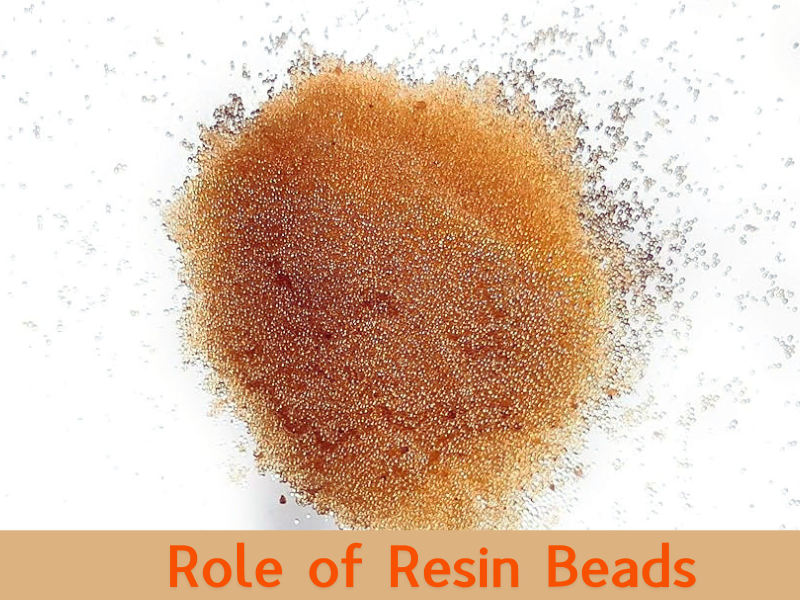
Resin beads are the key to the water-softening process. These small, porous beads are coated with sodium ions and are housed in the resin tank of the water softener system. As hard water passes through the resin tank, the resin beads attract and hold onto the calcium and magnesium ions, removing them from the water.
During the regeneration cycle, the brine solution flows through the resin beads, flushing out the accumulated hardness ions and replenishing the beads with sodium ions. This ensures the resin beads remain effective in softening the water and your water supply.
The Regeneration Cycle Explained
The regeneration cycle is a critical part of the water softening process. It involves flushing out the accumulated hardness ions from the resin beads and replenishing them with sodium ions. This cycle typically occurs at night when water usage is low to minimize disruption.
During the regeneration cycle, the brine solution flows through the resin tank, displacing the hardness ions and replacing them with sodium ions. The brine solution, now containing the hardness ions, is then flushed out of the system through a drain hose. This process ensures that the resin beads remain effective in softening the water.
The Impact of Softened Water on Appliances
Soft water can have a big impact on your appliances. Hard water can cause scale buildup in water using appliances like water heaters, washing machines, and dishwashers. This buildup can reduce efficiency, increase energy consumption, and lead to costly repairs or replacements.
By using soft water, you can prevent scale buildup and extend the life of your appliances. Soft water also improves the efficiency of your appliances, reduces energy consumption, and saves you money on your utility bills. It also improves the performance of your washing machines and dishwashers, resulting in cleaner clothes and dishes.
The Environmental Impact of Water Softeners
Water softeners can have both positive and negative environmental impacts. Salt-based water softeners produce wastewater during the regeneration cycle, which can contribute to water pollution if not properly managed. Additionally, the use of sodium chloride in the brine solution can increase the sodium content in the water supply.
However, water softeners can also have positive environmental impacts. By preventing scale buildup in appliances, they can improve efficiency and reduce energy consumption. This can lead to lower greenhouse gas emissions and a smaller carbon footprint. Additionally, salt-free water softeners offer an environmentally friendly alternative, as they do not produce wastewater or require the use of chemicals.
DIY vs. Professional Installation
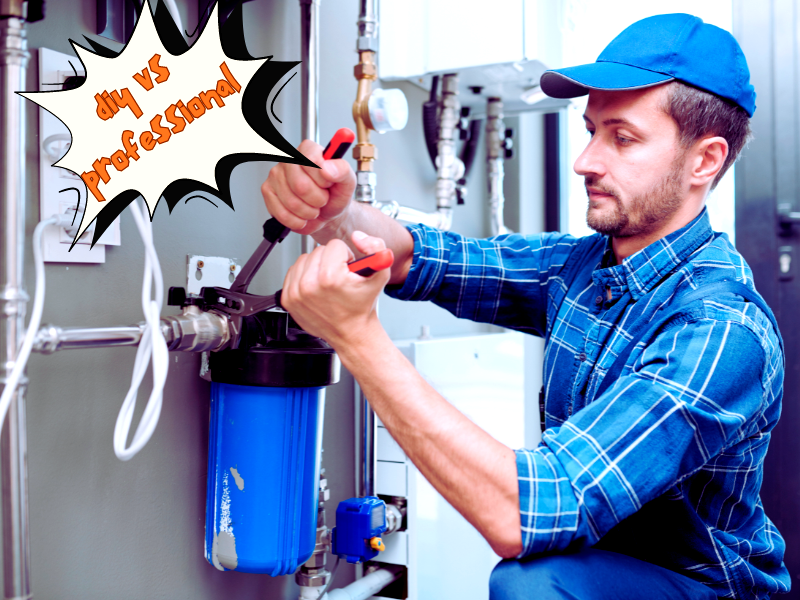
When it comes to installing a water softener system, you have the option of doing it yourself or hiring a professional. DIY installation can save you money on labor costs, but it requires a certain level of plumbing knowledge and skills. If you are confident in your abilities, you can follow the manufacturer's instructions and install the system yourself.
However, professional installation is recommended for those who are not comfortable with plumbing tasks or want to ensure the system is installed correctly. A professional plumber can help you determine the best location for the system, connect it to your water supply, and ensure it is functioning correctly. This can provide peace of mind and prevent potential issues down the line.
Common Myths About Water Softeners
There are several common myths about water softeners that can lead to misconceptions. One myth is that softened water is not safe to drink. In reality, softened water is safe for drinking, cooking, and other household uses. The amount of sodium added to the water during the softening process is minimal and does not pose a health risk.
Another myth is that water softeners are expensive to maintain. While salt-based systems do require regular salt replenishment and occasional maintenance, the cost is relatively low compared to the benefits of softened water. Additionally, salt-free systems require minimal maintenance and do not produce wastewater, making them a cost-effective option.
The Difference Between Water Softeners and Water Conditioners
Water softeners and water conditioners are often used interchangeably, but they are not the same. Water softeners use a process called ion exchange to remove calcium and magnesium ions from the water, resulting in softened water. These systems are highly effective in reducing water hardness and preventing scale buildup.
Water conditioners, on the other hand, do not remove hardness minerals. Instead, they alter the structure of the minerals, preventing them from forming scale buildup. These systems are ideal for those who prefer a salt-free solution and are looking to reduce maintenance. However, they may not be as effective in extremely hard water conditions.
The Role of Potassium Chloride in Water Softeners
Potassium chloride is an alternative to sodium chloride that can be used in water softeners. It works in the same way as sodium chloride, replenishing the resin beads with potassium ions instead of sodium ions. This can be a good option for those who are concerned about the sodium content in their water supply.
Using potassium chloride in your water softener can also provide additional health benefits. Potassium is an essential mineral that is important for maintaining proper heart and muscle function. By using potassium chloride in your water softener, you can increase your intake of this important mineral.
The Impact of Water Softeners on Water Quality
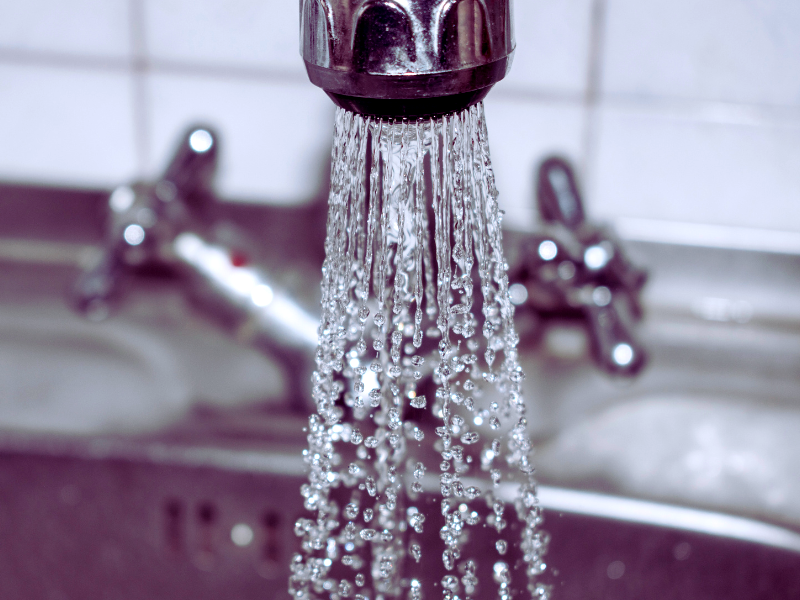
Water softeners can significantly improve the quality of your water. By removing calcium and magnesium ions, they reduce water hardness and prevent scale buildup in plumbing fixtures and appliances. This can improve the efficiency of your appliances and extend their lifespan.
Softened water also improves the condition of your skin and hair, leaving them feeling softer and smoother. It reduces soap scum and allows soap and detergents to lather better, making cleaning tasks easier and more effective. Additionally, softened water can improve the taste and quality of your drinking water.
The Benefits of Salt-Free Water Softeners
Salt-free water softeners, or water conditioners, offer several benefits. They do not require the use of salt, making them a low-maintenance and environmentally friendly option. They also do not produce wastewater, reducing their impact on the environment.
Salt-free water softeners are ideal for those who prefer a salt-free solution and are looking to reduce maintenance. They use a process called template-assisted crystallization (TAC) to alter the structure of hardness minerals, preventing them from forming scale buildup. While they may not be as effective in extremely hard water conditions, they can still provide significant benefits for your home.
The Drawbacks of Salt-Based Water Softeners
While salt-based water softeners are highly effective in reducing water hardness, they do have some drawbacks. One of the main drawbacks is the need for regular salt replenishment. This can be an ongoing cost and requires regular maintenance to ensure the system is functioning correctly.
Additionally, salt-based water softeners produce wastewater during the regeneration cycle. This can contribute to water pollution if not properly managed. The use of sodium chloride in the brine solution can also increase the sodium content in the water supply, which may be a concern for those on a low-sodium diet.
The Role of a Brine Tank in Water Softeners
The brine tank is a crucial component of a water softener system. It holds the brine solution, which is a mixture of water and sodium chloride or potassium chloride. During the regeneration cycle, the brine solution flows through the resin tank, flushing out the accumulated hardness ions and replenishing the resin beads with sodium or potassium ions.
The brine tank needs to be regularly replenished with salt or potassium chloride to ensure the system functions correctly. The amount of salt or potassium chloride needed depends on the hardness level of your water and the capacity of your water softener system. Regular maintenance of the brine tank is essential to keep your water softener system running efficiently.
The Benefits of Softened Water for Skin and Hair

Soft water can have many benefits for your skin and hair. Hard water can dry out your skin and make your hair look dull. The minerals in hard water can strip away natural oils, leaving you dry and itchy.
Using soft water can maintain moisture and leave your skin and hair soft and smooth. It reduces the need for excessive soap and shampoo as soft water allows these to lather better. This can result in healthier skin and hair and less dryness and irritation.
The Role of Ion Exchange in Water Softeners
Ion exchange is the process used by water softeners to remove hardness minerals from the water. The system has resin beads coated with sodium or potassium ions. As hard water passes through the resin tank, the resin beads attract and hold onto the calcium and magnesium ions, removing them from the water.
During the regeneration cycle, the brine solution flows through the resin beads, flushing out the accumulated hardness ions and replenishing the beads with sodium or potassium ions. This ensures the resin beads remain effective in softening the water and maintaining the quality of your water supply.
Summary
Water softener systems are valuable tools for homes with hard water, which contains high levels of calcium and magnesium. These systems work by replacing hard minerals with sodium ions through ion exchange, which helps prevent issues like clogged pipes, scale buildup, and dry skin. Softened water extends the life of your plumbing and appliances, makes cleaning easier, and improves skin and hair health. Available in salt-based and salt-free options, water softeners offer effective solutions for managing hard water, with benefits that include better appliance efficiency and smoother, softer skin. To keep up with the latest water filter tips and offers, subscribe to our newsletter today!
FAQs
Is soft water safe to drink?
Yes, soft water is safe to drink. The amount of sodium added during the softening process is very small and not harmful.
Do water softeners require a lot of maintenance?
Salt-based softeners need regular salt refills and occasional maintenance. Salt-free systems need less maintenance and no salt, making them a low-maintenance option.
How much does it cost to install a water softener?
Installing a water softener costs between $500 to $2,500 depending on the type and size of the system. Although the upfront cost is high it will save you money in the long run by extending the life of your appliances and reducing your energy bills.
